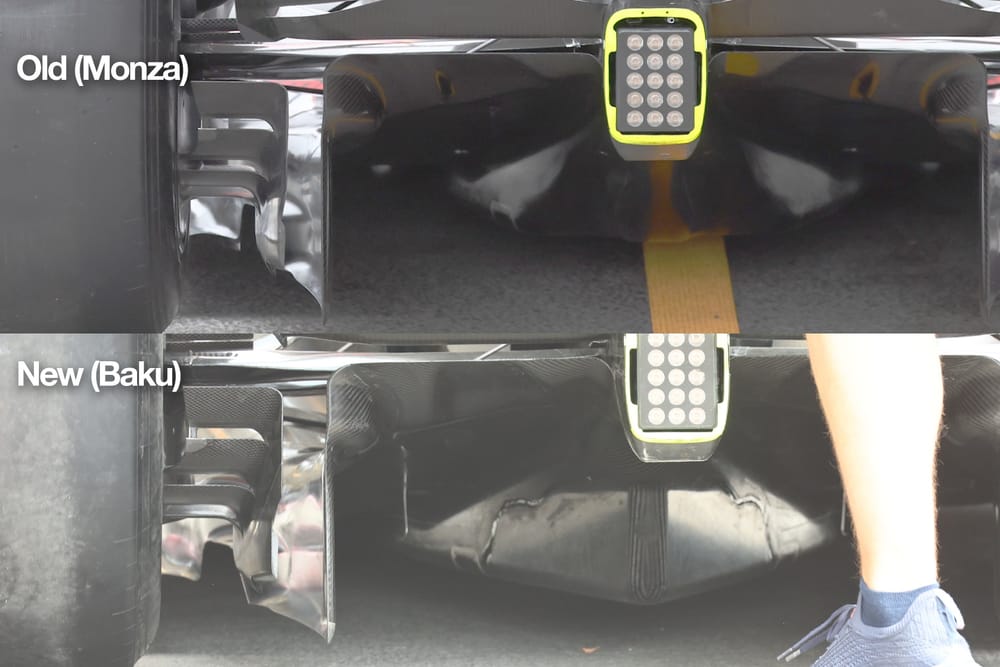Up Next

Formula 1 underfloors are a very complicated bit of kit in F1’s current rule cycle. They are ultimately responsible for the out-and-out performance of the car, so it’s no surprise this is an area Red Bull has focused on as it works to regain frontrunning form with its Azerbaijan Grand Prix upgrade.
Recent races have shown that no team really has a complete understanding of how far they can push the level of downforce produced by the floors before hitting airflow stability problems.
There are lots of regulations controlling what you can and can’t do with the underfloor and the diffuser surfaces. But in a reverse of how you tackle the rest of the car, you need to start at the rear and work forward.
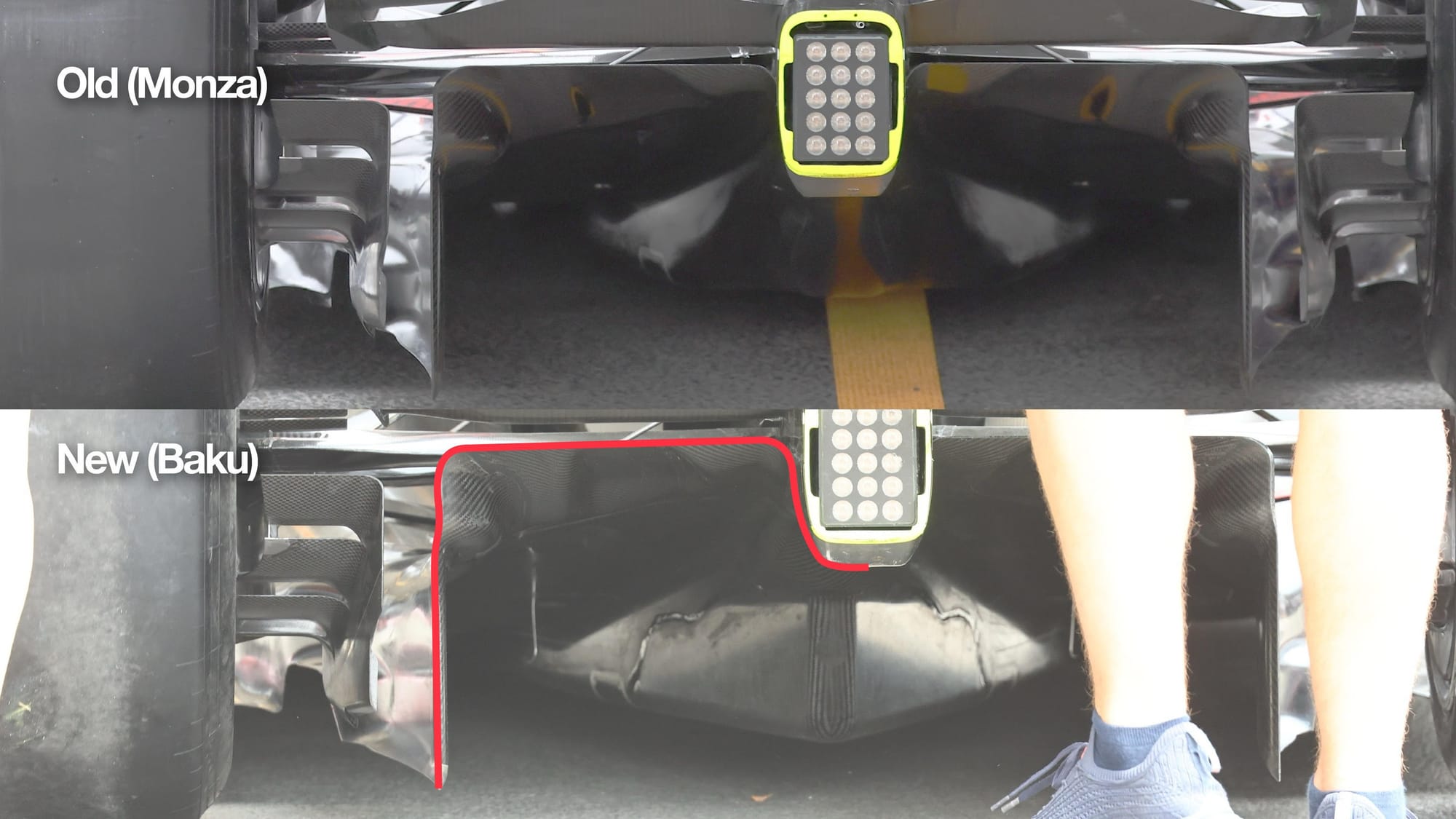
The dimensions of the diffuser outlet area highlighted with the red lines are defined in the regulations. That sets what you have to work with to get the best from the underfloor. All teams use the maximum area allowed, so it’s all down to the expansion rate from the leading edge of the underfloor, through the throat of the tunnels, into that diffuser and, in turn, its exit.
The expansion rate is important because the underfloor is all about accelerating the airflow through that throat area to decrease the pressure and constricting it with your floor edge sealing system. That flow then expands as it exits the ground effect tunnel and the pressure returns to normal.
The position and aggressiveness of the beam wing will also work hand in hand with the diffuser exit area. It’s a bit like the upper flap of the rear wing - without it the mainplane would probably only produce about 20% of the downforce that the total of the two elements actually generates.
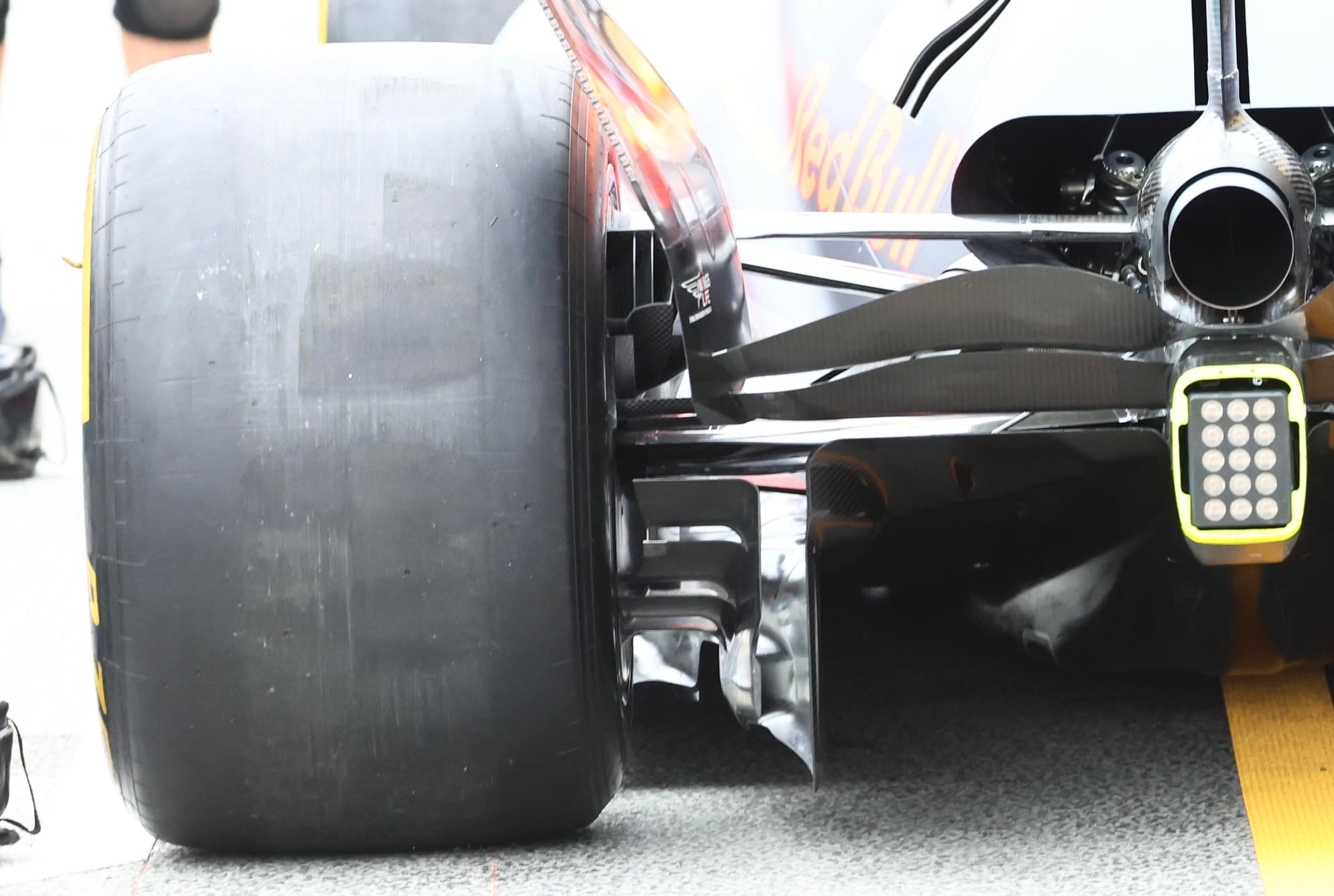
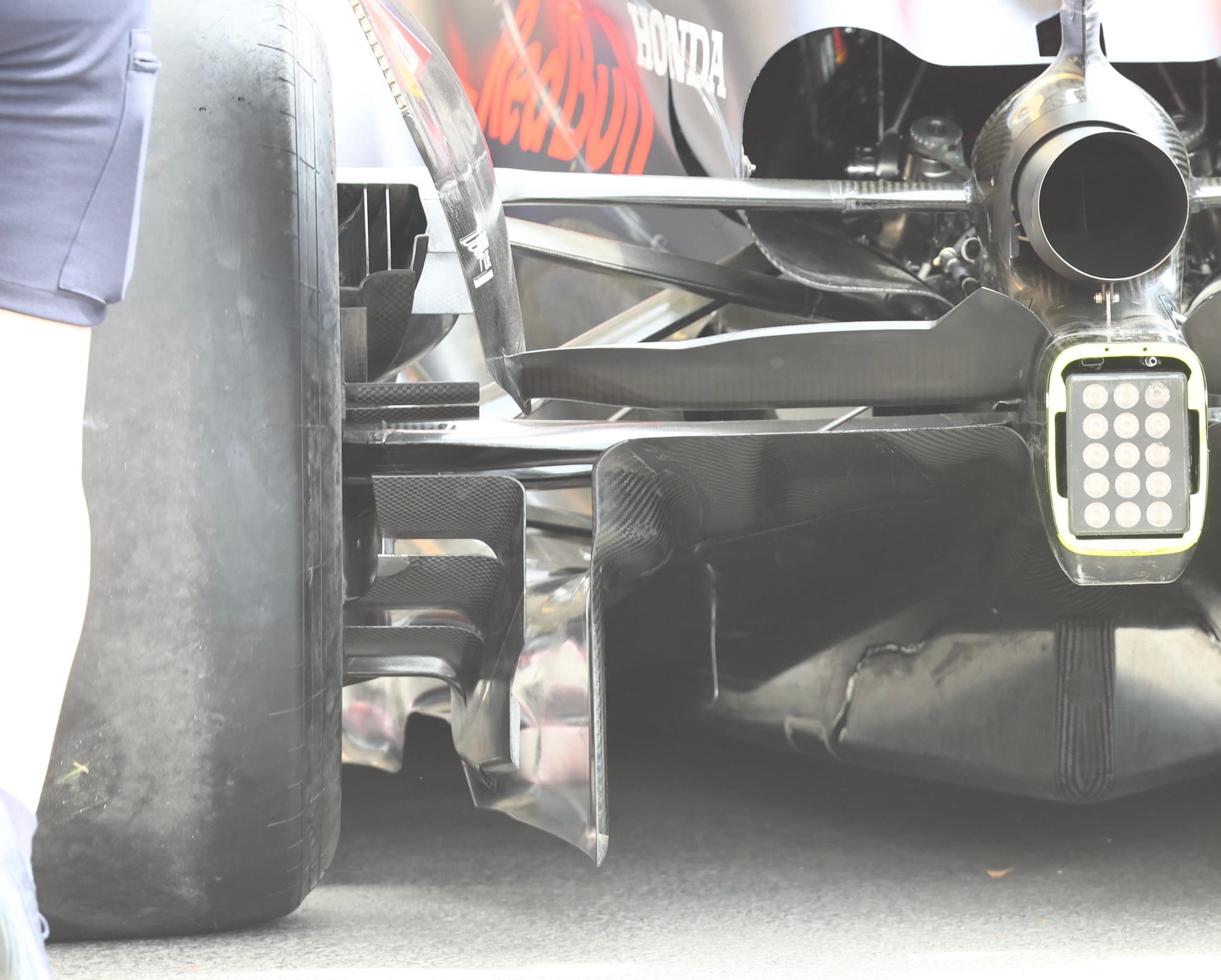
It’s a very three-dimensional expansion rate, meaning that it is actually more of a volume expansion. Increase the inlet volume and you will lose downforce. Raise the throat area of the floor and you will lose downforce but get more consistency. Reduce the inlet area and you will increase the risk of flow separation in the underfloor. Lower the throat area and you will increase the downforce, but with it increase the risk of porpoising.
In other words, there are lots of different ways to run into problems.
Taking that all into account, it is critical to have a well-controlled volume expansion rate that is fairly uniform from the throat of the floor through to the diffuser exit. When you have achieved that, then you can look at how the floor-edge sealing or leakage affects that expansion rate.
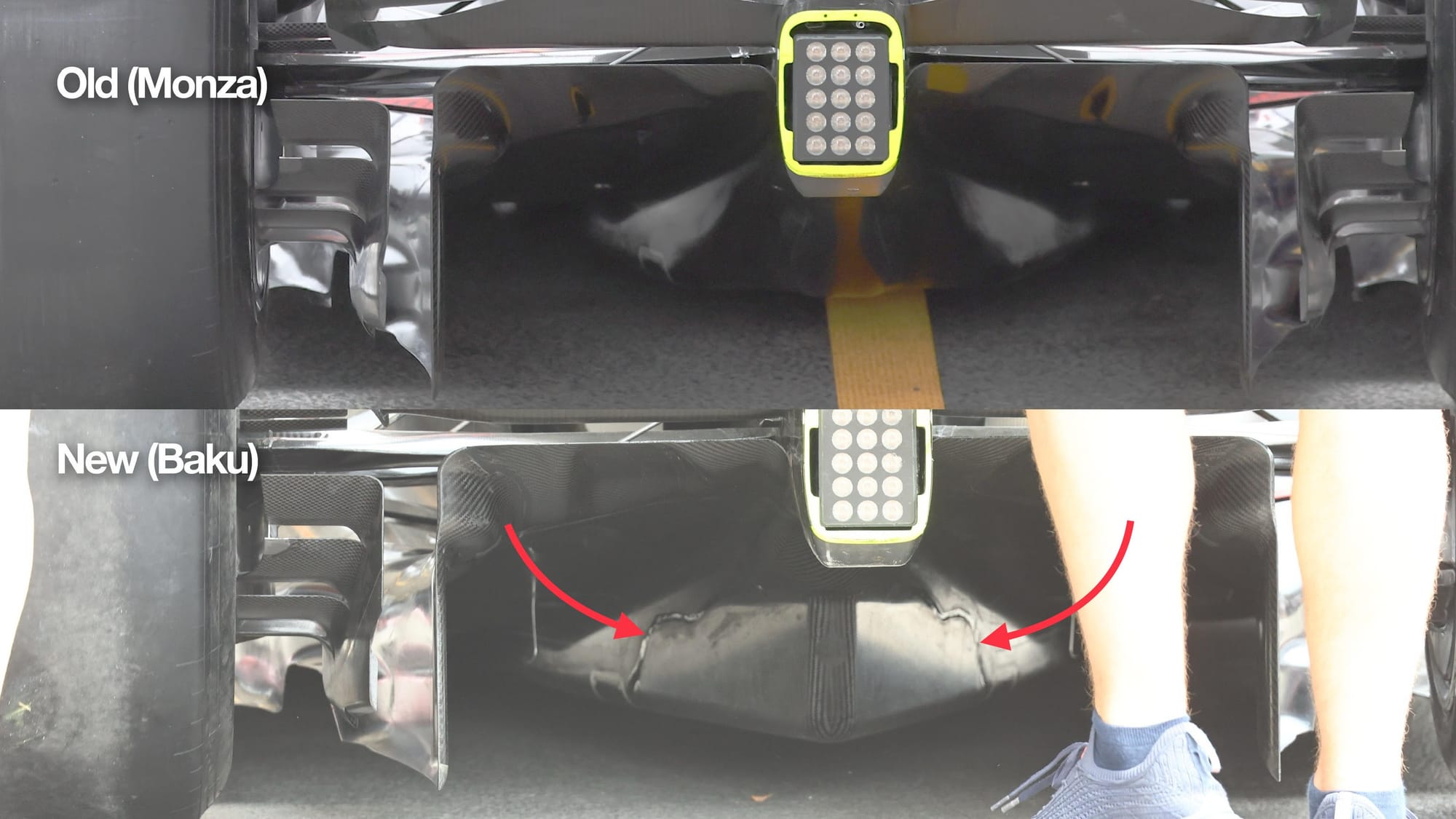
One of the areas that Red Bull is working in, and which is visible, is in modifying the underfloor close to the diffuser exit as part of its attempts to increase that volume expansion, especially at low speed when there is more leakage from the floor edges.
You can see evidence highlighted with the red arrows of where - thanks to the budget cap - it has been cut and shut, and there will likely be similar modifications made out of sight.
Gone are the days of the big, well-funded teams just producing a new floor.

By adding this central pod section to what could be called the gearbox and rear impact fairing, it will separate the actual underfloor tunnels for longer before they open up to the maximum diffuser outlet area. By doing this, you reduce the risk of one side of the underfloor having a negative effect on the other side of the underfloor.

How you position the inlet splitters and manage the flow scavenged from the front corner of the floor, and in turn what you do with that flow to help seal the underfloor further rearward and how much leakage you actually end up with, will all impact this.
Never mind that the downforce increases with the square of the speed - the slower the car is going the higher the ride height will be, so the greater the leakage along the sides of the floor, the less downforce from the underfloor. This means getting that expansion rate consistent at low speed with higher ride heights with lots of leakage and at high speed with lower ride heights and reduced floor edge leakage, all this without inducing airflow separation problems at high speed, is a big challenge.
Red Bull’s surface modifications will not just be in the areas that we can see in these pictures. I’m pretty sure they will have gone through the complete underfloor surface and altered it to optimise the expansion rate as best they can for low-speed performance, but not so dramatically that it introduces flow separation problems at high speed.


